Defoliating Cannabis: A Comprehensive Guide
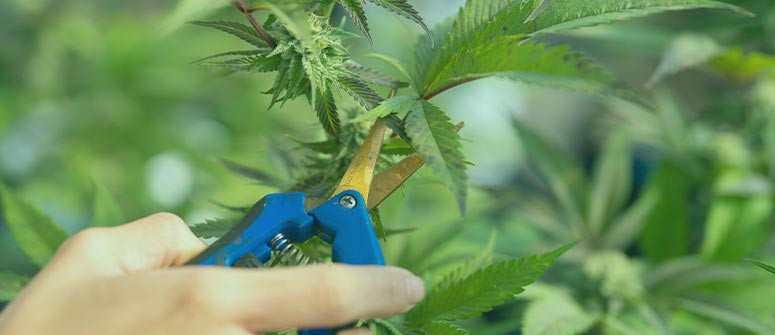
Defoliation is a popular technique used by cannabis growers to improve plant growth, quality, and yield. In this guide, we'll cover everything you need to know about cannabis defoliation, including its benefits and drawbacks, when and how to do it, and the differences between defoliation and lollipopping.
Contents:
- Understanding Cannabis Defoliation
- Defoliation vs. Lollipopping
- Benefits of Cannabis Defoliation
- Risks of Cannabis Defoliation
- When to Defoliate Cannabis Plants
- Defoliation During Flowering Stretch: Yes or No?
- Defoliation During Flush: Yes or No?
- How to Defoliate Cannabis Plants
- How and When to Defoliate Autoflowers
- Defoliation and Cannabis: Is it Worth it?
If you grow cannabis, you have likely heard of a technique called defoliation. This process involves selectively removing leaves from your plants to promote light penetration and air circulation, resulting in larger and more abundant buds. However, it's crucial to use defoliation with care as it can be stressful for the plant and affect overall growth.
Understanding Cannabis Defoliation
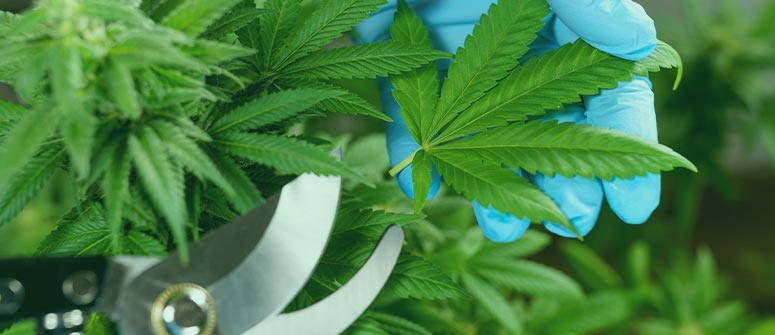
Cannabis defoliation is the process of selectively removing leaves from your plants. The aim is to improve light penetration and air circulation, promoting healthier growth and larger yields. It can also help eliminate diseased or damaged leaves that hinder plant development.
Defoliation vs. Lollipopping
Lollipopping involves removing the lower branches and leaves of the plant to focus on the upper buds and encourage upward growth. In contrast, defoliation entails removing leaves from all parts of the plant to improve light penetration and air circulation. Both techniques can be useful, but they impact plant growth differently.
Benefits of Cannabis Defoliation
Defoliation offers a wide range of benefits, including:
- Improved light penetration: By removing excess leaves, light can reach the lower buds, promoting healthier growth and improved yields.
- Increased air circulation: Better air circulation can help prevent mould and mildew, maintaining plant health and increasing yields.
- Larger, more abundant buds: By redirecting resources to bud development, defoliation can result in bigger and denser buds.
- Removes diseased or damaged leaves: Eliminating leaves that harm plant growth and health.
Risks of Cannabis Defoliation
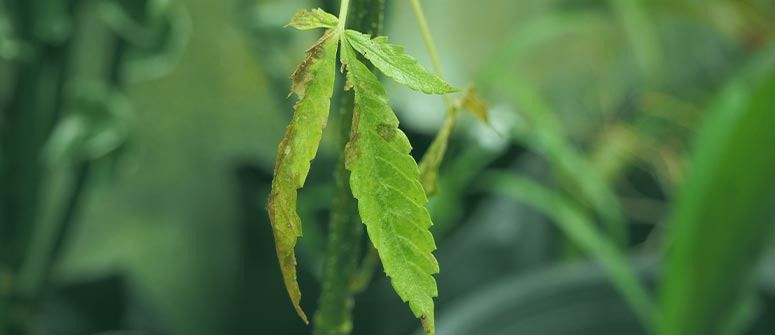
While there are benefits to defoliating cannabis plants, some risks and drawbacks must be considered:
- Over-defoliation can cause stress, leading to slower growth and lower yields.
- Defoliation can expose plants to sunburn, which can cause damage to the leaves and negatively impact growth.
- Increased risk of pests and disease as the plant's natural defenses are weakened due to the removal of leaves.
- Defoliation can be more complicated than it initially seems, and improper defoliation can harm the plant rather than improve it.
When to Defoliate Cannabis Plants
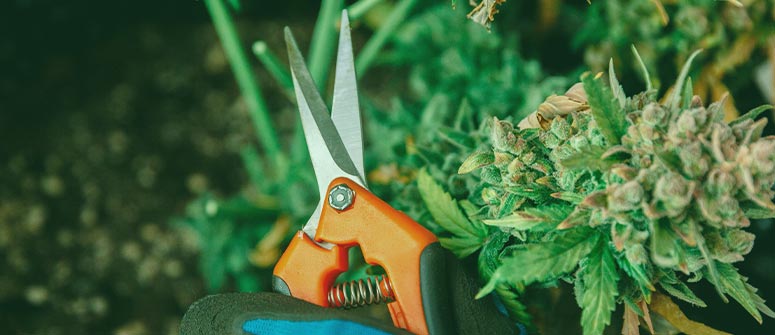
Defoliation can be done during vegetative and flowering stages, but timing and technique are crucial. Defoliation in the vegetative phase is best done in the early stages, while flowering defoliation is more controversial, down to experience, and interpretation.
One thing is for sure, it is not recommended to defoliate during the flowering stretch, nor when flushing.
The best time to defoliate during the vegetative stage is when the plant is at least six inches tall and has at least three sets of true leaves.
Defoliation During Flowering Stretch: Yes or No?
It's not recommended to defoliate your plants during the flowering stretch as it can slow down plant growth and reduce yield.
Defoliation During Flush: Yes or No?
It's generally not recommended to defoliate during the flushing phase since the plant uses the remaining nutrients and prepares for harvest.
How to Defoliate Cannabis Plants
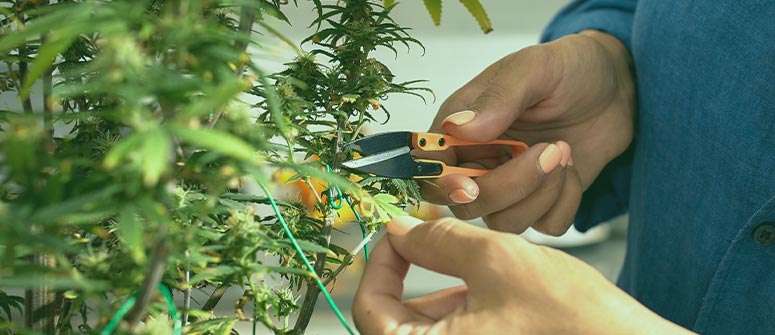
To defoliate your cannabis plants, you'll need sterile and sharp scissors or pruning shears. Here are the steps for defoliating vegetative and flowering cannabis plants:
How to Defoliate Vegetative Weed Plants
- Choose the right time: Wait until your plant has grown enough leaves to sustain it before starting defoliation. Typically, this is around the 3–4 weeks into vegetation.
- Identify which leaves to remove: Focus on removing the larger fan leaves that block light from reaching the lower part of the plant. These leaves are not crucial for photosynthesis, and removing them can redirect energy to the developing buds.
- Use clean, sharp tools: This helps to minimise damage to the plant. Dirty or dull tools can increase the risk of plant stress and disease in the wound.
- Cut close to the stem: Make clean cuts as close to the stem as possible.
- Only remove a little: Avoid removing more than 20–30% of the plant's leaves at once. The plant needs leaves to photosynthesise and produce energy for growth.
- Monitor the plant after defoliation: Check on the plant daily to ensure that it is recovering well and responding positively to the defoliation. If plants droop or start to discolour, chances are they are stressed. Allow them time to recover.
How to Defoliate Flowering Weed Plants
- Choose the right time: Wait until after the flowering stretch (around day 21–28) and when the buds have started to form. This is when the plant can handle the stress of defoliation better.
- Identify which leaves to remove: Focus on removing the larger fan leaves that are blocking light from reaching the lower parts of the plant and any leaves that are covering the buds. Removing these leaves can help promote better airflow and light penetration, leading to better bud development.
- Use clean, sharp tools: As stated above, clean and sharp tools minimise damage to the plant and risk of infection.
- Cut close to the stem: Make clean cuts as close to the stem as possible.
- Don't remove too much: As stated above, you don't want to remove more than 20–30% of leaves. Removing too many leaves can cause the plant to focus on repairing the damage instead of bud development. As stated above, it can also hamper photosynthesis, slowing everything down.
- Monitor the plant after defoliation: Check on the plant daily to ensure that it is recovering well and responding positively to the defoliation. It's essential to be careful not to over-defoliate in the flowering stage, as this can reduce yields and affect bud development.
How and When to Defoliate Autoflowers
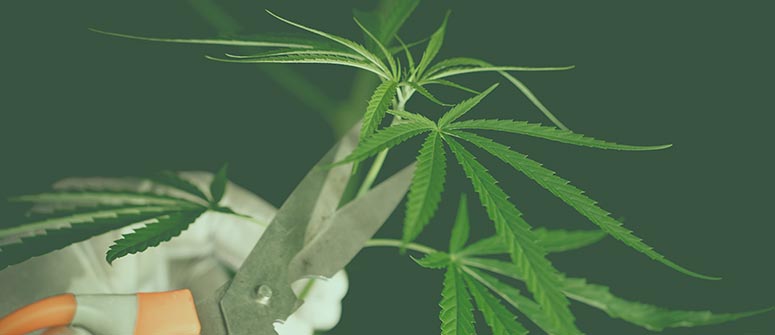
Defoliating autoflowers can be challenging as these plants have a fixed timeline and limited time to recover from stress. It's recommended to defoliate autoflowers during the vegetative stage if the plant is showing healthy growth and has a robust root system. When defoliating autoflowers, removing only a few leaves at a time is crucial. Ensure you leave a high proportion of the foliage on the plant. It's also essential to avoid damaging the main stem or developing buds.
Defoliation and Cannabis: Is it Worth it?
Cannabis defoliation can be a useful technique to improve your plants' growth and yield. By using defoliation with care, you can promote healthier growth and larger, more abundant buds. It's essential to defoliate at the right time and only remove a limited number of leaves to avoid plant stress and reduce yield. Always use sterile and sharp tools to minimise damage and the risk of disease. With proper attention and practice, defoliation can be an excellent tool for pushing plants to their limits.




